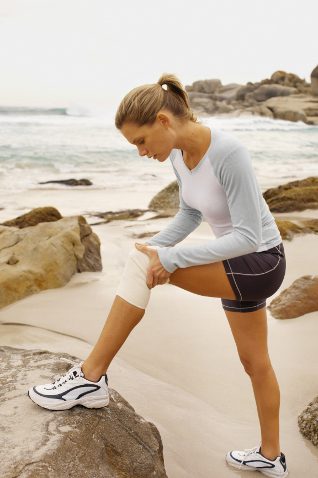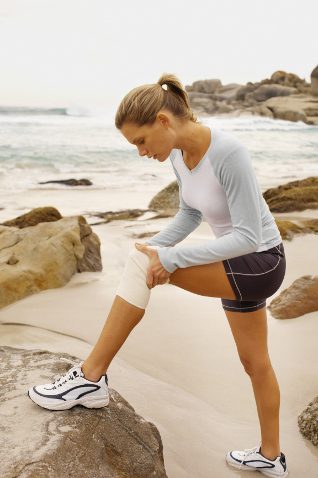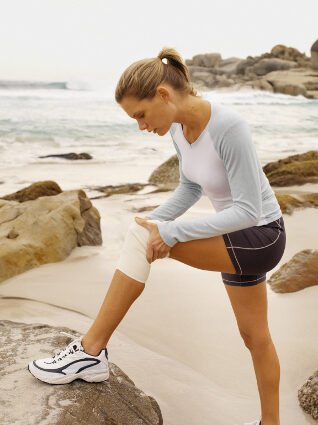contingut

Dolor al genoll flexionat: causes i tractaments. Què fer si l'articulació del genoll fa mal al doblegar-se
From time to time, many of us may experience knee pain when flexing. And there is nothing strange here, because the knee joints are one of the most vulnerable in our body. Why can knee pain occur and what is the correct way to provide the necessary assistance?

At the slightest bothersome knee pain, consult a doctor and stop physical activity on the joint for the duration of treatment. If the knee hurts when bending, then, as a rule, it does not go away on its own.
Causes del dolor de genoll
Knee pain during flexion occurs all the time, and in almost everyone. True, the nature of this pain can vary greatly. To roughly understand why from time to time your knee joint hurts when bending, it is worth a little brush up on your school knowledge of anatomy.
The knee joint is the largest and most complex in structure in our body. It connects the femur and the bones of the lower leg – the tibia. They are all fastened with the help of muscles, ligaments and tendons. At the same time, cartilaginous pads – menisci, which are simultaneously responsible for the mobility of the knee, protect the knee joints.
If knee pain occurs when flexing, it can indicate a number of reasons:
damage to the knee cartilage;
inflammation of the periarticular bags;
pathology of other parts of the knee joint.
Often people, especially the elderly, are concerned not only with knee pain during flexion, but also joint stiffness, its poor mobility. In this case, joint pain can be accompanied by swelling, the knee is hot to the touch. Together, these symptoms can indicate such a common disease as arthritis.
Some of the most common injuries that cause knee pain when flexing are:
a strong blow to the knee or knee on a hard object;
unnatural prolonged knee position;
drop to your knee.
The consequences of this kind of injury are not only knee pain, but also the appearance of hematoma, swelling and pain in the joint even without movement. This causes numbness, coldness, or tingling sensation in the knee.
How to relieve knee pain when flexing?
The first step after a knee injury and pain during flexion is to apply ice to the joint. Every 2 hours, the ice pack must be changed and kept for 20 minutes, no more. In this case, the ice should not touch the skin and it is best to pack it in a towel. If knee pain is chronic when flexing, run a piece of ice around the knee after each exercise.
In cases where the knee hurts when flexing enough strongly, doctors advise not to hesitate and not suffer, but to take a safe medicine. You can start with a pain reliever (ibuprofen, aspirin, naproxen, or acetaminophen). Just be sure to read the instructions before use and do not exceed the prescribed dose.
It is a misconception that in case of knee pain during flexion, it is imperative to apply a fixation bandage. The need for its imposition can only be determined by a doctor, based on the nature of the damage. Otherwise, you can only increase the pain in the knee when bending.
If the pain is persistent, shoe insoles can help. They help redistribute the stress on the knees.
If you know what kind of physical activity leads to pain in the knee when bending, then try to limit it. But this does not mean that playing sports should be quit. Prefer stairs to the elevator, walk more.
Bending knee pain can be a chronic condition that is best identified early. The treatment of such diseases requires an integrated approach and a fairly long time.
Therefore, for the slightest bothersome knee pain, see your doctor.
Més notícies al nostre .










